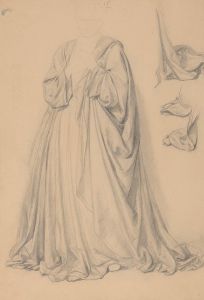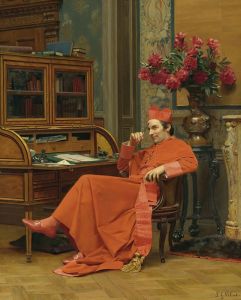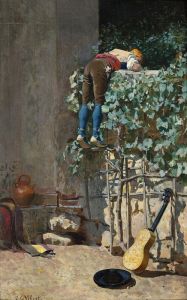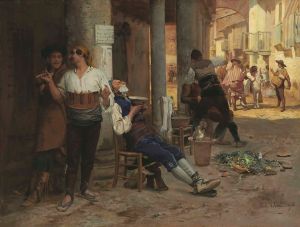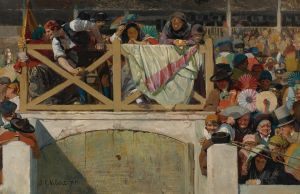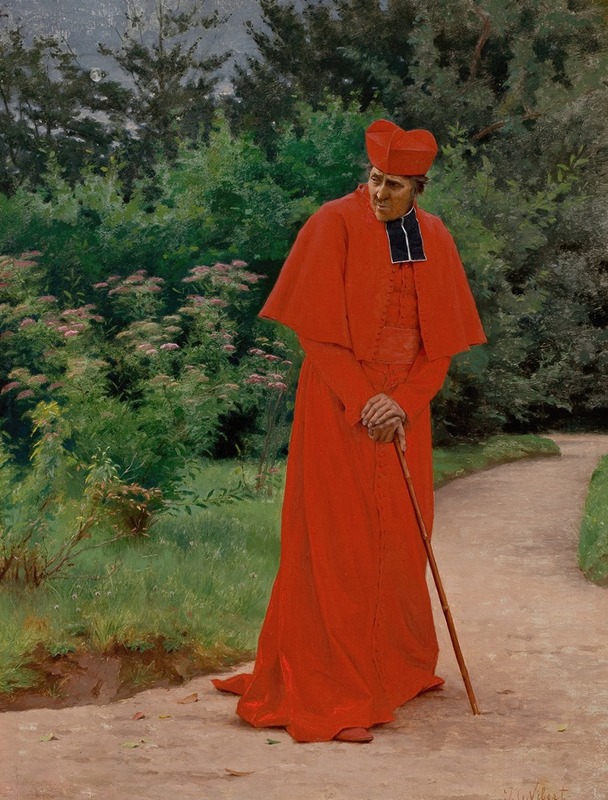
The Cardinal
A hand-painted replica of Jehan Georges Vibert’s masterpiece The Cardinal, meticulously crafted by professional artists to capture the true essence of the original. Each piece is created with museum-quality canvas and rare mineral pigments, carefully painted by experienced artists with delicate brushstrokes and rich, layered colors to perfectly recreate the texture of the original artwork. Unlike machine-printed reproductions, this hand-painted version brings the painting to life, infused with the artist’s emotions and skill in every stroke. Whether for personal collection or home decoration, it instantly elevates the artistic atmosphere of any space.
Jehan Georges Vibert was a French academic painter known for his satirical and often humorous depictions of clergy and cardinals. One of his notable works is "The Cardinal," which exemplifies his skill in capturing the opulence and sometimes the perceived hypocrisy of the Catholic Church's higher echelons during the 19th century. Vibert was born on September 30, 1840, in Paris, France, and studied at the École des Beaux-Arts under the tutelage of renowned artists such as François-Édouard Picot and Félix-Joseph Barrias.
"The Cardinal" is one of Vibert's many paintings that focus on the theme of ecclesiastical life, a subject he frequently explored throughout his career. His works often feature cardinals in luxurious settings, engaging in leisurely activities that contrast with their religious duties. This painting style is characterized by meticulous attention to detail, vibrant colors, and a touch of humor, which made his works popular among art collectors and critics of his time.
Vibert's paintings, including "The Cardinal," are often seen as a commentary on the excesses and indulgences of the clergy. He used his art to subtly critique the disparity between the church's wealth and the vows of poverty and humility that its members were supposed to uphold. This approach resonated with the public, who were increasingly aware of and critical of such contradictions during the period.
"The Cardinal" typically depicts a cardinal in a richly adorned setting, often engaged in an activity that highlights the contrast between his religious role and his worldly indulgences. Vibert's attention to detail is evident in the luxurious textures of the cardinal's robes, the intricate patterns of the furnishings, and the overall opulence of the scene. This meticulousness not only showcases Vibert's technical skill but also enhances the satirical impact of the painting.
Vibert's work was well-received in his lifetime, and he exhibited regularly at the Paris Salon, where he gained considerable acclaim. His paintings were collected by art enthusiasts across Europe and America, and he became a member of the prestigious Legion of Honor in 1870. Despite the humorous and sometimes critical nature of his work, Vibert was respected for his ability to capture the human condition with both wit and empathy.
"The Cardinal" and other similar works by Vibert remain significant in art history for their unique blend of satire and realism. They provide insight into the societal attitudes towards the church and its leaders during the 19th century, reflecting broader themes of power, wealth, and morality. Vibert's legacy as an artist lies in his ability to provoke thought and entertain through his masterful depictions of the clergy, making him a distinctive figure in the world of academic painting.
Jehan Georges Vibert passed away on July 28, 1902, in Paris, leaving behind a body of work that continues to be appreciated for its artistic merit and social commentary. His paintings, including "The Cardinal," remain in various collections and museums, where they continue to be studied and admired for their craftsmanship and insightful portrayal of ecclesiastical life.






